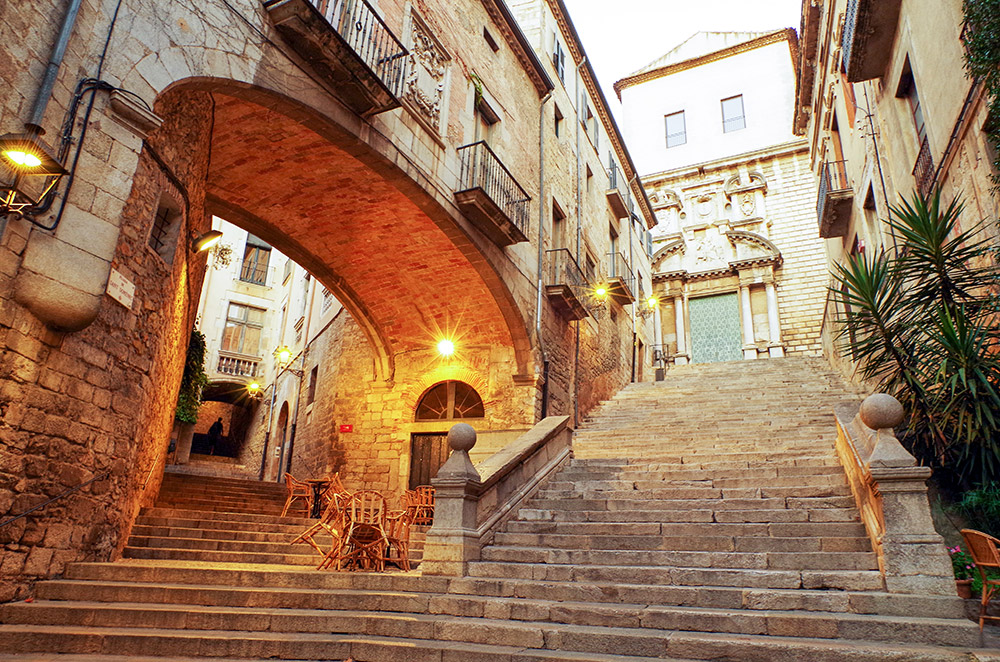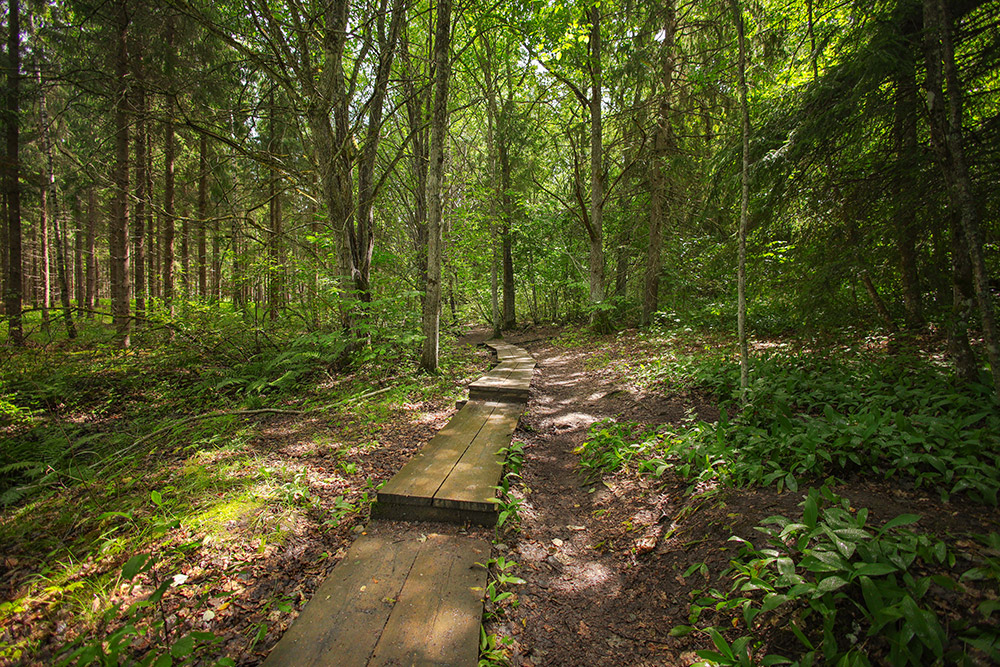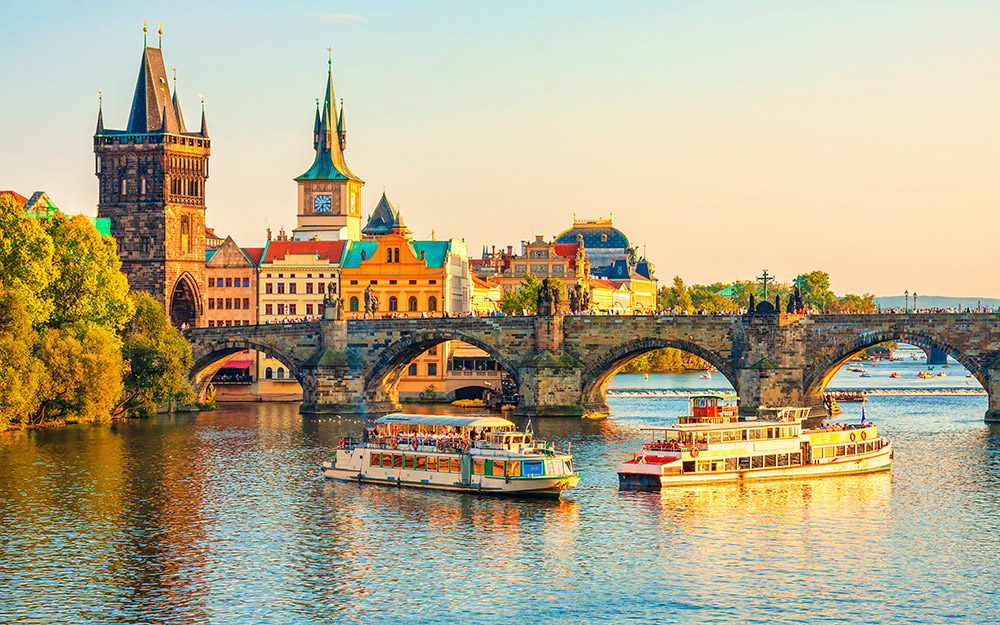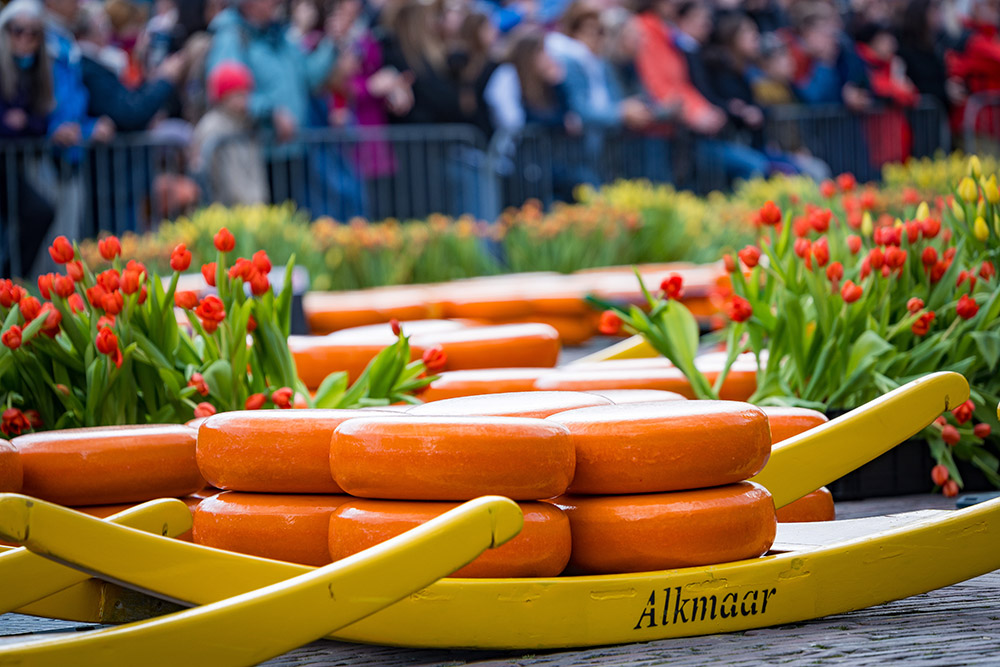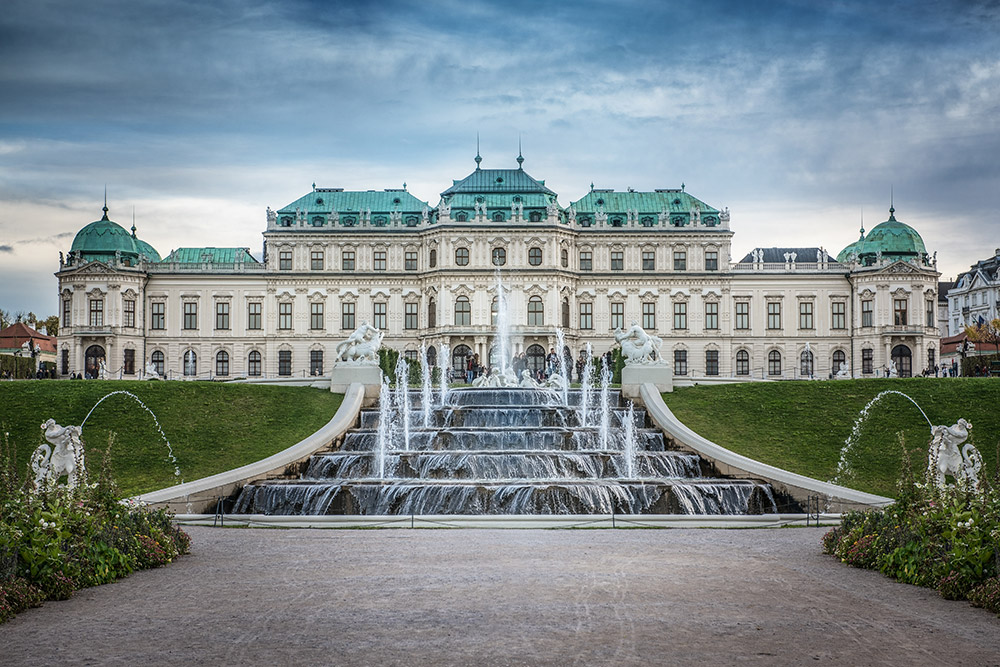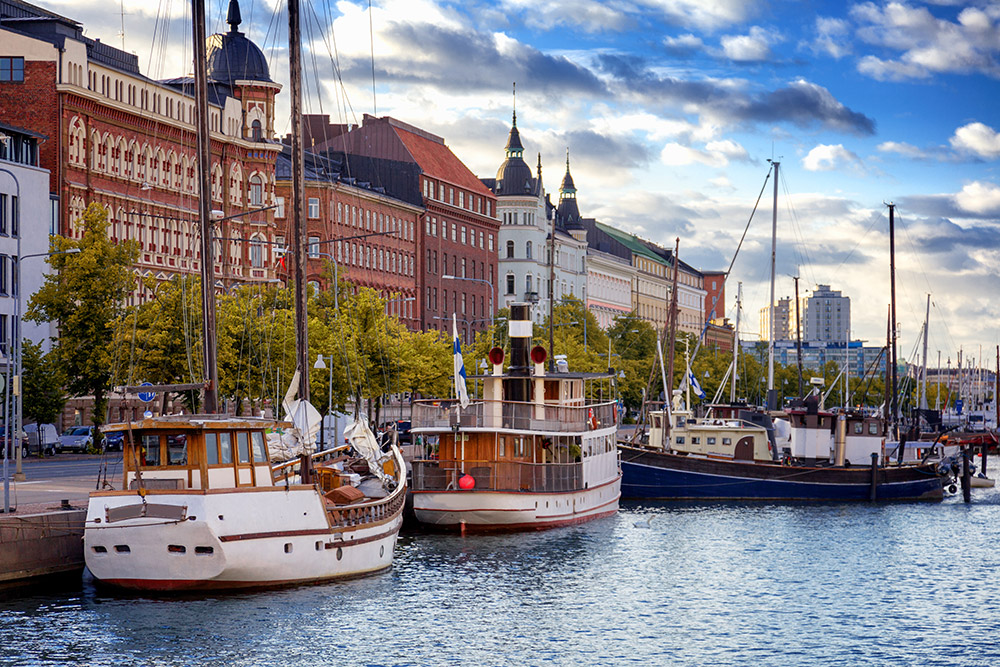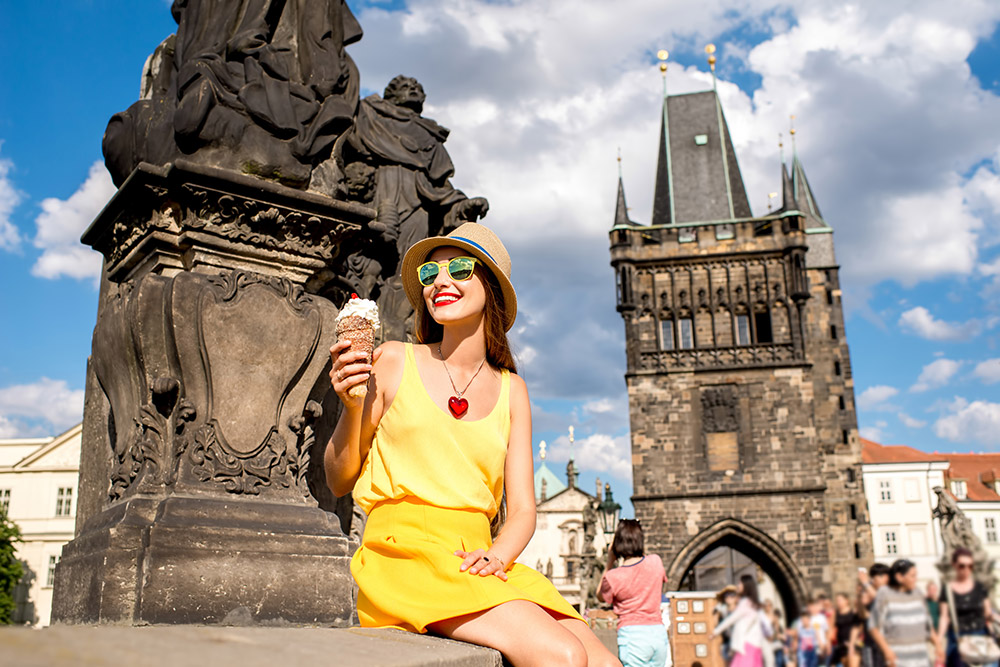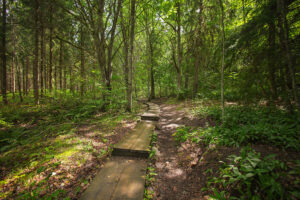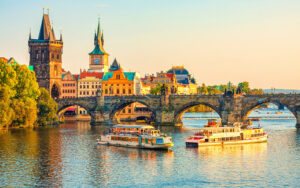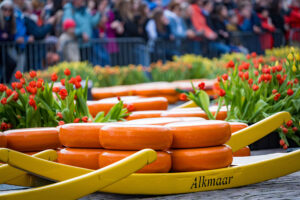This culinary-focused tour of Austria, a country with a rich history, stunning landscapes, cultural treasures, and a diverse cuisine, begins in the heart of the imperial city of Vienna. Explore the local heritage and the splendor of imperial palaces while enjoying regional specialties such as Wiener schnitzel, often paired with white wine.
Popular itinerary for a culinary tour of Austria:
Next, head to Dürnstein, and from there to Melk Abbey, renowned for its stunning Baroque architecture and treasures. In the Wachau Valley, known for its apricot orchards, savor Wachauer Marillenknödel, delightful apricot dumplings served with a glass of local vineyard wine.
In Linz, discover its treasures and be sure not to miss the Linzer Torte, a traditional pastry filled with berry jam. In the musical city of Salzburg, the birthplace of Mozart, enjoy a light soufflé with a glass of sparkling wine. In Innsbruck, known for its picturesque streets, indulge in a hearty bowl of Tiroler Gröstl paired with Blaufränkisch wine.
After crossing the Alps, you’ll reach the city of Graz, where you can continue to indulge in the rich flavors of Austrian cuisine, from savory dumplings to delicate pastries, all accompanied by an impressive selection of Austrian wines.
The recommended 11-day route covers approximately 870 miles. Please note that some routes and sites mentioned are closed during the winter season.
Day 1: Vienna
Start the day with a walking tour of Vienna’s city center. On Universitaring, a section of the Ring Road that circles the historic heart of the city, you’ll see prominent buildings like the University of Vienna, museums, and cultural institutions. Admire the neo-Gothic architecture of the Rathaus in all its grandeur. Further along, you’ll find the Austrian Parliament building, designed in the classical Greek style. The boulevard then curves around to the Museumsquartier near Maria Theresa Square, featuring a statue of Empress Maria Theresa at its center.
On the other side of the boulevard, pass through the Äußeres Burgtor gate to the imperial courtyard of the Hofburg Palace. This former imperial residence boasts numerous attractions within its expansive grounds, including the Sisi Museum, which displays the treasures and writings of Empress Elisabeth, known as Sisi, and the Imperial Treasury Museum, which houses the Habsburg dynasty’s royal artifacts, crowns, jewels, and historical treasures.
From here, continue to the Spanish Riding School and then explore Kohlmarkt, a street lined with luxury shops and cafés, including the iconic Demel coffeehouse, famous for its exquisite pastries and coffee traditions dating back to the late 18th century. Next, proceed to the expansive Graben Street, where the ornate Plague Column (Wiener Pestsäule) stands tall, and continue to St. Stephen’s Cathedral. This Gothic landmark has dominated Vienna’s skyline since the 12th century, featuring stunning architecture, colorful stained glass windows, and ornate altars. Climb to the observation deck for a panoramic view. The cathedral area is filled with shops, malls, cafes, and restaurants.
During the tour, enjoy delightful local beverages such as Wiener Melange, a special Viennese coffee similar to cappuccino but with more milk and topped with whipped cream, and Almdudler, a popular Austrian soft drink made from a blend of herbs, reminiscent of ginger ale. Vienna has its own wine-growing area with vineyards scattered throughout the city, so be sure to pair your meals with the unique flavors of the local wines. Gemischter Satz, produced in Vienna, is made from a blend of different grape varieties, creating a wine with a complex array of flavors.
Spend the night in Vienna.
Day 2: Vienna, continued
In the morning, visit the Belvedere Palace, a Baroque masterpiece. The Upper Belvedere houses an extensive collection of Austrian art, while the Lower Belvedere hosts temporary exhibitions and offers a glimpse into the luxurious lifestyle of the Habsburg monarchy. The beautifully landscaped gardens connecting the two palaces feature fountains, sculptures, and stunning views of Vienna. The Belvedere is not only an architectural gem but also a cultural treasure showcasing the splendor of Austria’s history and artistic heritage, especially those of Vienna.
After lunch, escape the city bustle and unwind in the sprawling Prater Park. Its vast green spaces are perfect for picnics, leisurely walks, or bike rides along historic paths. Take a ride on the iconic Wiener Riesenrad Ferris wheel, built in 1897, and enjoy breathtaking panoramic views of Vienna from its train car-like gondolas, which reach heights of up to 220 feet.

End the day with a visit to the bustling Naschmarkt, located in the heart of the city. This vibrant market has been a culinary and cultural hub for over a century, stretching along the Wienzeile. It offers a delightful mix of fresh produce, international delicacies, and art and collectibles, making for a lively and multicultural experience.
Conclude your day at one of the market’s restaurants, which offer a wide range of culinary options. Enjoy the famous Wiener schnitzel, often served with potato salad or lingonberry jam, or try the traditional Tafelspitz, featuring boiled beef with horseradish sauce, roasted potatoes, and a mix of root vegetables. For dessert, savor the Sachertorte, a chocolate cake with a layer of apricot jam covered in dark chocolate icing, typically served with a dollop of unsweetened whipped cream. Another local treat is Apfelstrudel, a pastry filled with spiced apples, raisins, cinnamon, and sugar, wrapped in thin layers of dough and usually served warm, dusted with powdered sugar, and accompanied by vanilla sauce or ice cream.
Spend the night in Vienna.
Day 3: From Vienna to Dürnstein to Melk
Start the day with a visit to Schloss Schönbrunn Palace, a UNESCO World Heritage Site and one of Europe’s most opulent palaces. Built in the 17th century, it served as the summer residence for Habsburg monarchs, including Empress Maria Theresa. Admire its exquisite Baroque architecture, manicured gardens, and lavishly decorated interiors. Explore the magnificent halls and chambers, such as the Grand Gallery and the Hall of Mirrors, each reflecting the splendor of the Habsburg era. The sprawling gardens, adorned with sculptures and fountains, provide a picturesque backdrop to the palace and are also home to the world’s oldest zoo. Enjoy panoramic views of the garden and Vienna from the Gloriette, which crowns the hill opposite the palace.
Next, head towards Melk, passing through the Wachau Valley and the town of Dürnstein. This region is known for its apricot orchards and offers typical regional foods and wines. Try Wachauer Laberl (small, round wheat rolls often filled with local delicacies like smoked ham, cheese, or pickles), Wachauer Saibling (pan-fried or grilled fish served with potatoes and salad), Wachauer Rieslingsuppe (a traditional soup made with Riesling wine, broth, vegetables, and herbs), and smoked trout (a local specialty usually served with horseradish and bread). Local wines like Grüner Veltliner and Riesling are popular, and the local brandy, Wachauer Marillenschnaps, is a strong, aromatic apricot brandy. For a refreshing drink, try Wachauer Weißweinschorle (a wine spritzer) or Wachauer Apfelsaft (apple juice made from locally grown apples).
When you’re ready for tastings, drive about 56 miles on Roads 1A, 33S, and 3 to the town of Dürnstein. This charming town, nestled along the banks of the Danube River, is famous for the castle where Richard the Lionheart was imprisoned. The hike to the castle offers wonderful views from the top but is only accessible by foot. Dürnstein features colorful houses and a lively shopping street where you’ll find shops, local cafes, and wine taverns offering the region’s renowned wines, especially Grüner Veltliner and Riesling. The town is also known for its apricot delicacies, including fresh fruits, jams, and liqueurs, thanks to the abundant orchards in the Wachau Valley.
After visiting Dürnstein, continue on Road 3 for about 19 miles to the town of Melk. Stroll through the streets and admire the well-preserved medieval architecture and charming courtyards. Enjoy tasty Austrian pastries and explore the galleries showcasing local artwork.
Spend the night in Melk.
Day 4: From Melk to Linz
Start the day with a visit to the Benedictine Abbey of Melk. Founded in 1089 by Leopold II, Margrave of Austria, this abbey quickly became a significant cultural and educational center. Perched majestically atop a hill, the colossal Baroque-style structure offers breathtaking views of the Danube River. Entry is by guided tour only, covering the monastery’s treasures, its impressive rooms adorned with ceiling and wall paintings, and the ancient library containing over 90,000 volumes, many from the medieval period.
Throughout the 18th and 19th centuries, the monastery played a pivotal role in Austria’s cultural and intellectual scene, hosting luminaries such as Goethe, Mozart, and Haydn. Today, the abbey is a UNESCO World Heritage Site, welcoming visitors year-round.

After your visit to Melk, embark on a scenic 56-mile drive to Linz. Though primarily known for its industrial character, Linz is home to a charming old town center that spans about a mile along a central thoroughfare, from Nibelungen Bridge to the theater adjacent to the train station. Near the bridge lies the impressive main square, dominated by the Trinity Column, a towering white marble monument erected in 1716 in gratitude for the city’s survival during the plague. Atop the column, Santa Maria Immaculata overlooks the highest gable of the Feichtinger-Haus, where 19 bells play snippets of music by Austrian composers three times a day.
Take a leisurely stroll to the old cathedral, a Baroque masterpiece built in the 17th century. During Mozart’s visit to Linz in 1783 for the installation of a new organ in the Linz Cathedral, he rapidly composed his 36th Symphony and conducted its premiere. Visit the front of the house where he stayed and listen to an excerpt from the symphony played on an audio system installed there. While exploring the city, be sure to pick up a bag of traditional local cookies: Linzer Augen.
In the evening, explore Landstraße, a bustling shopping district that beckons with its array of boutiques, three malls, and flagship stores. Sample a variety of local foods, including:
- Erdäpfelkas: a traditional spread made from potatoes, onions, oil, vinegar, and spices, usually served as a spread on bread or as a dip with vegetables.
- Linzerteller: small, tasty sausages made from a mixture of pork and beef, seasoned with spices like marjoram, garlic, and pepper. They are often grilled or pan-fried with pickled cabbage and mustard.
- Linz-style Potato Salad: a salad made from boiled potatoes, onions, vinegar, oil, mustard, and spices like salt, pepper, and parsley. It’s a classic side dish often served at gatherings and celebrations.
- Bratapfel: a baked apple filled with a sweet filling made from ingredients like nuts, raisins, cinnamon, and sugar. It’s often served warm with a dollop of whipped cream or vanilla sauce.
- Linzertorte: a famous dessert originating from Linz, considered one of the oldest cake recipes in the world. It’s a delicious tart made with a buttery crust filled with raspberry jam, usually with a lattice design on top.
- Linzertorte Liqueur: a sweet local liqueur made with raspberries, almonds, and cinnamon.
Spend the night in Linz.
Day 5: From Linz to Salzburg
Travel along Highways 60E and 1A for approximately 75 miles to reach the city of Salzburg. Once a formidable ecclesiastical city-state in the Holy Roman Empire, Salzburg preserves the legacy of its prestigious history. Its skyline punctuated with spires and domes, its narrow winding alleys, and its vibrant markets all contribute to its unique charm. In January 1756, the renowned composer Wolfgang Amadeus Mozart was born here, undoubtedly influenced by the city’s ambiance in his early musical compositions.
En route to the iconic Salzburg Cathedral, don’t miss the opportunity to pick up some Mozartkugeln, chocolate candies filled with marzipan and nougat, coated in dark chocolate, and named after the legendary composer Mozart. The cathedral itself is a magnificent specimen of Baroque architecture with touches of Rococo embellishments. Adjacent to it, the DomQuartier Museum showcases a captivating array of decorative elements, ranging from intricately adorned items to exquisite furniture, candelabras, and artworks, offering a glimpse into Salzburg’s rich artistic heritage from the 17th and 18th centuries.
Climb either by foot or funicular to Hohensalzburg Castle, which has stood for about 1000 years on a hill overlooking the city. Over the centuries, the castle has expanded, its walls thickened and fortified, ensuring complete defense for both the castle and its residents. Today, it houses the Archbishops’ museum and offers a stunning panoramic view of the city and the Alps.
In the evening, wander through the Old Town and dine at one of the restaurants serving local cuisine. Specialties include Salzburger Nockerl, a unique dish featuring beef cooked in beer, typically served with onions, mustard bread, or potatoes; Brettljause, a rustic platter with an assortment of sausages, cheeses, pickles, and bread; and Kasnocken, a savory dish consisting of small dumplings made from flour, eggs, and cheese, often accompanied by fried onions and served with salad.
As a delightful finale to your meal, don’t miss out on one of Salzburg’s outstanding desserts: Salzburger Nockerl. This fluffy, soufflé-like dessert is made from egg whites, sugar, and flour, baked until golden, and typically dusted with powdered sugar. Pair it with a refreshing Stiegl Beer from the local brewery. For those fond of liqueurs, be sure to try the locally crafted Mozart Liqueur, an indulgent chocolate liqueur infused with vanilla and cocoa.
Spend the night in Salzburg.
Day 6: From Salzburg to Kehlsteinhaus to Kitzbühel
Start your day with a visit to Salzburg’s Mirabell Palace, a Baroque marvel dating back to the 17th century. Admire its stunning gardens, famous for the iconic Pegasus Fountain and beloved Dwarf Garden. The palace’s interior, including the elegant Marble Hall, exudes Baroque grandeur. Once a residence for prince-archbishops, the palace gained fame as a filming location for “The Sound of Music.”
After exploring the palace, drive approximately 25 miles on Road 1A to the “Eagle’s Nest” (Kehlsteinhaus), perched atop the Bavarian Alps. Originally built as a teahouse to commemorate Adolf Hitler’s 50th birthday, the Kehlsteinhaus is now a historical monument and architectural marvel. Offering breathtaking views of the surrounding mountains, it also serves as a poignant reminder of its dark past during World War II. Today, tourists flock to the site to marvel at its stunning panoramas and reflect on its somber history.
Next, continue on Roads 305 and 178 for about 50 miles to the picturesque town of Kitzbühel to spend the night.
Day 7: From Kitzbühel to Innsbruck
Travel along Roads 170 and 45E for approximately 50 miles to reach the town of Wattens, home to the Swarovski Crystal Worlds. Established in 1895, Swarovski is renowned for its vibrant crystals, and the museum provides a sensory journey with artistic installations, including the “Giant” and the “Crystal Cloud.” It’s a celebration of art, creativity, and the dazzling legacy of crystal.
Continuing on Road 45E for another approximately 12 miles, you’ll arrive in Innsbruck, nestled in the heart of the Tyrolean Alps. Set within the picturesque Inn Valley, Innsbruck is surrounded by towering mountains reaching heights ranging from 7218 to 8858 feet. Explore the city’s medieval heritage at the Turmwachter, a watchtower dating back centuries. Climb its 133 steps to reach the observation deck, offering panoramic views of the city and its majestic surroundings, much like the watchmen and fire lookouts did over 400 years ago.

Next to the tower, you’ll find the historic Old Town Hall and the iconic Golden Roof (Golden Dachl), adorned with approximately 2,600 gold-plated copper shingles. Dating back to around 1500, this architectural marvel features 12 captivating reliefs of Moorish dancers. Adjacent to the Golden Roof, the Old Town Hall stands as a testament to Innsbruck’s storied past, boasting both architectural beauty and historical significance.
Continue your journey to the magnificent St. James Cathedral, a Baroque masterpiece dedicated in 1724. Located amidst the charming alleys of the Old Town, this cathedral adds to the charming atmosphere of Innsbruck’s historic district.
Conclude the day by wandering through the charming Old Town and enjoying Tyrolean cuisine, including:
- Gröstl: A hearty dish consisting of potatoes, onions, and sliced roasted meat seasoned with herbs and spices, topped with a fried egg.
- Kasnocken: Similar to Spaetzle, Kasnocken are small dumplings made from flour, eggs, and fried cheese, cooked in a pan with butter and onions.
- Tiroler Speck: Tyrolean bacon, a local specialty often served thinly sliced as a snack or appetizer, paired with fresh bread, cheese, and pickles.
For dessert, sample the beloved Austrian dessert, Kaiserschmarrn. This fluffy pancake is served with powdered sugar, fruit compote (typically plums or apples), and sometimes rum-soaked raisins. Another tempting option is Bauernkrapfen, a traditional Tyrolean dessert. These doughnuts are made from yeast dough, fried until golden brown, and filled with apricot jam or other fruit preserves.
Spend the night in Innsbruck.
Day 8: From Innsbruck to Zell am See
This morning, make sure to visit Ambras Castle. Built during the Renaissance era by Archduke Ferdinand II of Tyrol in the 16th century, the castle has since transformed into a museum and art gallery. You’ll be captivated by its remarkable collections, which include armor and weapons, historical artifacts, and artworks from various periods. A highlight of the castle is the Spanish Hall, an exquisite event venue adorned with elaborate wood carvings and wall paintings. Surrounding the castle are picturesque gardens, complete with manicured lawns, flower beds, and stunning mountain vistas, offering a truly breathtaking experience.
Following lunch, set out on Routes 45E, 169, and 165, covering approximately 93 miles to reach the renowned town of Zell am See. For dinner, treat yourself to a Brettljause, a rustic platter featuring an assortment of sausages, cheeses, pickles, and bread. This hearty and satisfying meal pairs perfectly with Blaufränkisch red wine, boasting flavors of dark fruits, spices, and earthy undertones that complement grilled meats, stews, and game dishes. If you’re a fan of dumplings, don’t miss out on trying Kasnocken – small dumplings made from flour, eggs, and cheese, typically served with fried onions.
Spend the night in Zell am See.
Day 9: From Zell am See through Grossglockner Alpine Road to Villach
Embark on an unforgettable alpine adventure by journeying along Road 107 to the renowned Grossglockner Alpine Road. This winding path traverses the Alps, reaching heights of approximately 8,200 feet. Prepare to be awestruck by breathtaking vistas and unforgettable experiences as you navigate through the majestic peaks. Stretching for roughly 29 miles, the Grossglockner High Alpine Road crosses the Hohe Tauern National Park. Along the way, stunning alpine landscapes, rugged mountaintops, and picturesque valleys unfold before you. Numerous lookout points and rest areas provide the perfect opportunity to pause, soak in the panoramic views, capture stunning photos, and truly immerse yourself in the natural grandeur. The highlight of the journey is the breathtaking view of Grossglockner peak, Austria’s highest summit, standing at approximately 11,800 feet.
Upon exiting Road 107, transition to Road 100 for an additional 56 miles, eventually arriving at the town of Villach. Today’s total driving distance is approximately 137 miles.
Spend the night in Villach.
Day 10: From Villach to Klagenfurt to Graz
Begin your day by traveling along Road 2A for approximately 25 miles to the city of Klagenfurt am Wörthersee, where you can visit Minimundus. This expansive park features miniature models of famous buildings, trains, bridges, ships, and other intriguing items from around the world, all at a scale of 1:25.
After exploring the miniature park, continue your journey on Road 2A for about 87 miles to Graz, nestled on the banks of the Mur River at the foot of a castle. Graz has been recognized as a UNESCO World Heritage Site and was once considered the European Capital of Culture. The city’s old town is adorned with over 1,000 historic buildings dating from the 14th to the 17th centuries, showcasing a variety of architectural styles from Gothic to Baroque. Amidst this architectural tapestry, you’ll also find ultra-modern structures. Take a leisurely stroll through the streets of the Old Town and marvel at landmarks such as the Kunsthaus Graz museum, affectionately known as “the friendly alien.” This avant-garde structure, resembling a bubble or organic creature, illuminates the night sky with a captivating display of lights.
Indulge in the city’s culinary delights by savoring local dishes such as:
- Steirisches Backhendl: A regional specialty of Styria, your current location. This dish features tender pieces of breaded and fried chicken, typically accompanied by potato salad and sauce.
- Käsekrainer: A sausage filled with cheese, often grilled to perfection and served with mustard and bread. This popular street food can be found throughout Graz and Austria.
- Erdäpfelkas: A flavorful spread crafted from potatoes, onions, oil, vinegar, and spices. It’s commonly enjoyed as a spread on bread or as a dip alongside fresh vegetables.
During the harvest season, savor the taste of Sturm, a young wine partially fermented, boasting a slightly effervescent texture and sweet flavor.
Spend the night in Graz.
Day 11: From Graz to Vienna
This morning, ascend to the imposing Schlossberg fortress, perched atop a rocky outcrop rising nearly 400 feet high. Transformed into a public space in the mid-19th century, the fortress now boasts landscaped gardens and a prominent clock tower with a face measuring 16 feet in diameter. From the tower and its surroundings, admire the breathtaking panoramic vista of Graz.

Delve deeper into the city’s rich history at the fortress museum. Explore the extensive tunnel system, largely excavated during World War II when the site served as a command center. These chambers and artillery halls offer unique perspectives and picturesque views of the cityscape below.
After lunch, embark on a scenic journey back to Vienna, approximately 118 miles away. Travel via Roads 2A and 59E, enjoying the Austrian countryside as you return to the capital city.


